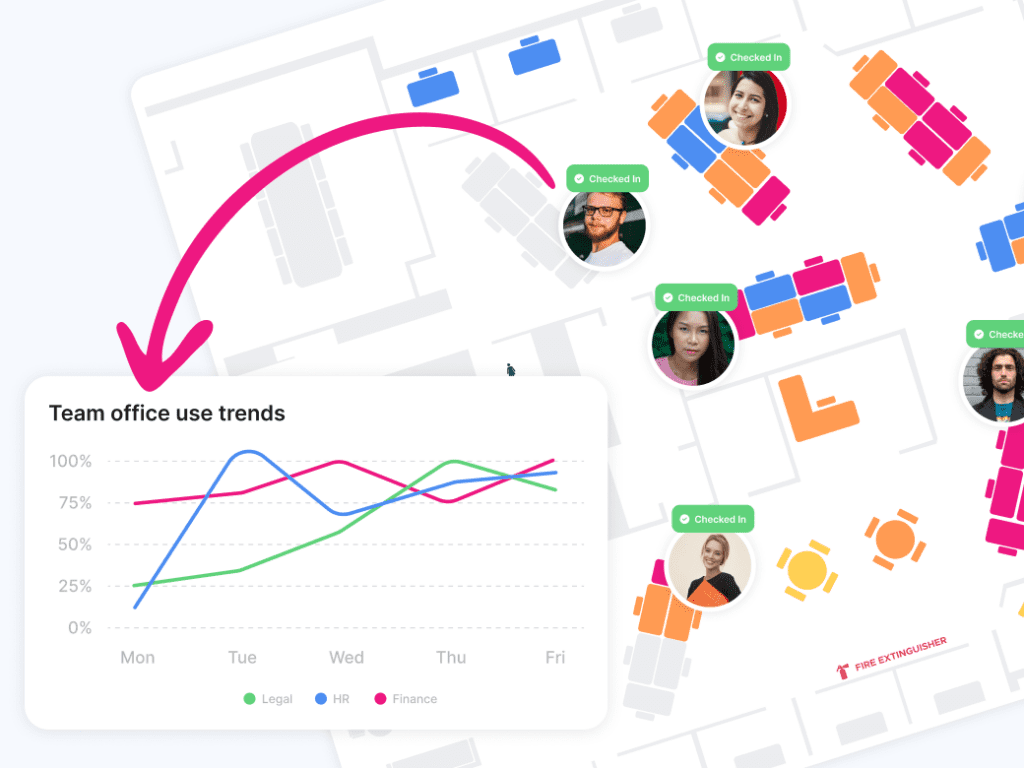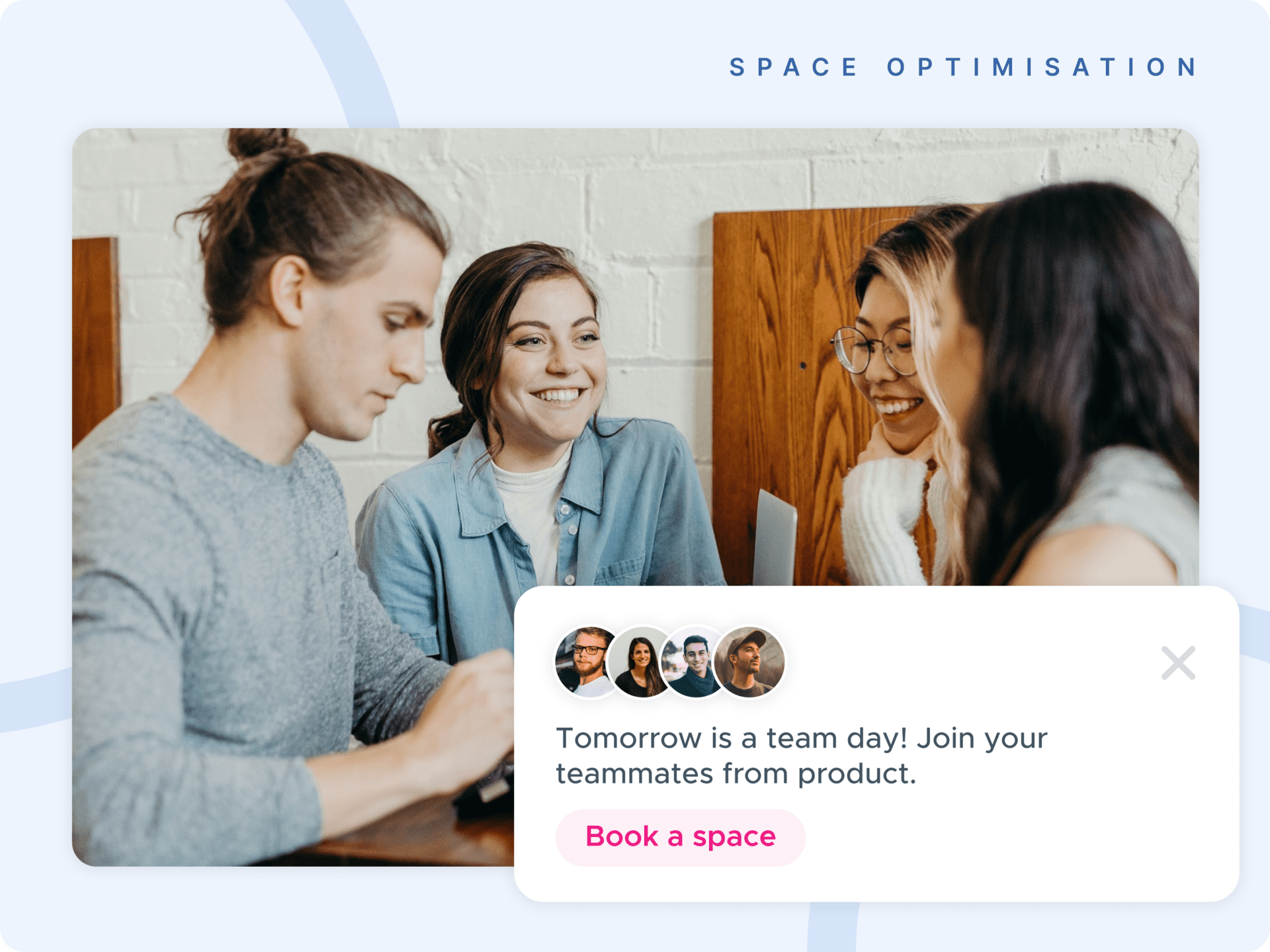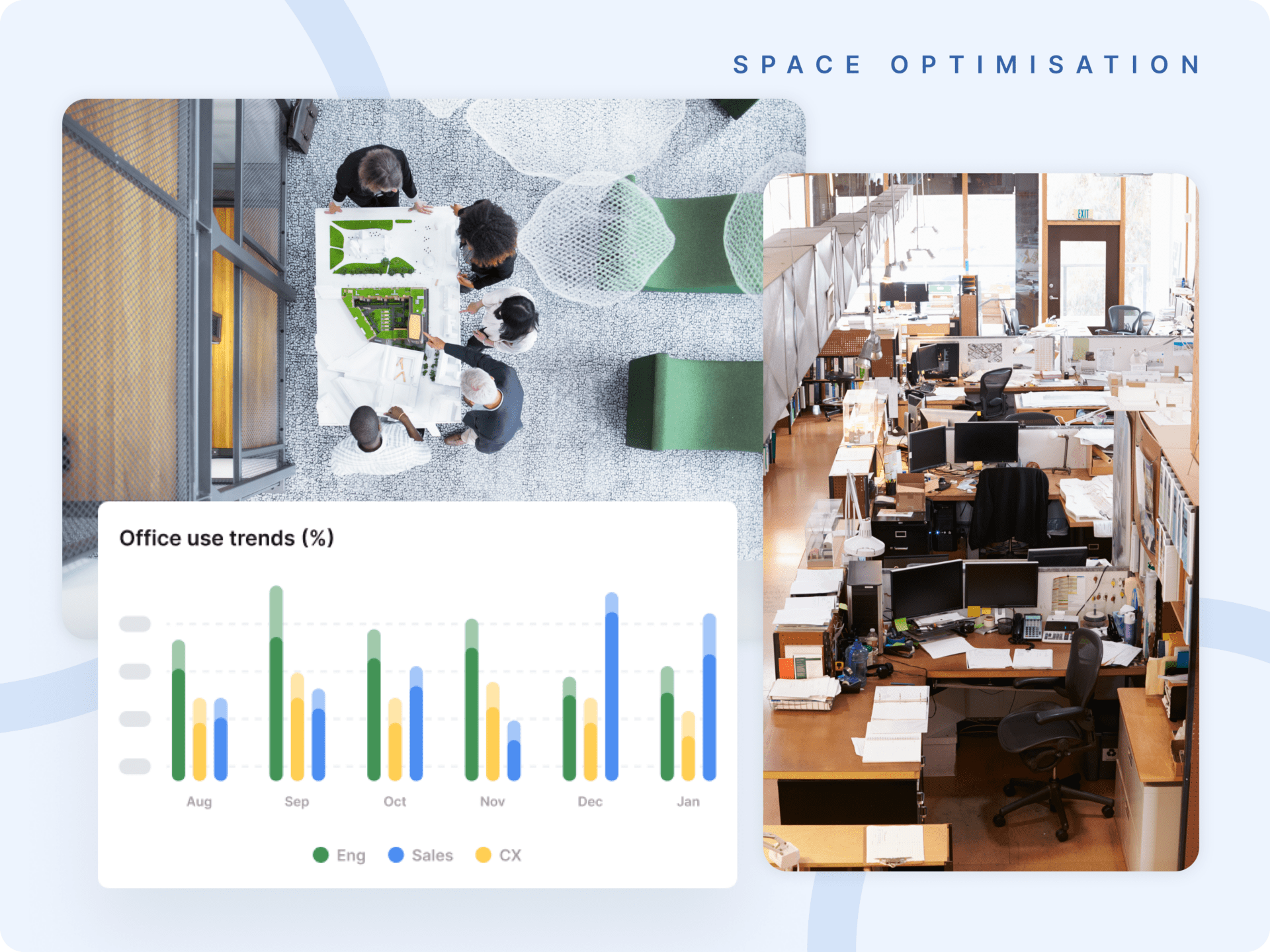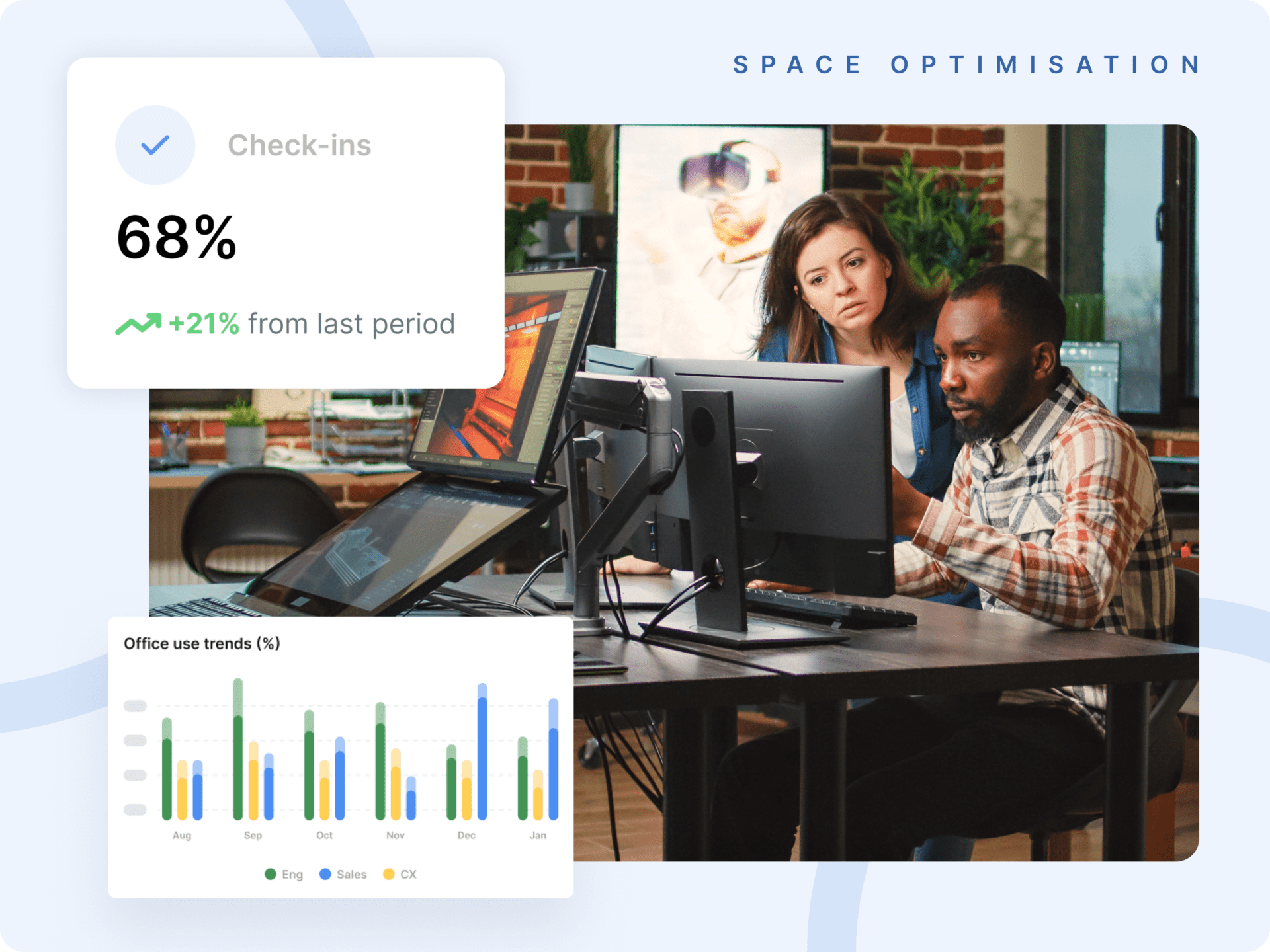Forget motion sensors and lights that switch on when you walk by. The smartest offices in the hybrid era aren’t just reactive—they’re responsive. Responsive to how teams coordinate. When they collaborate best. Why they come in at all.
In a world where workplace costs are under scrutiny and productivity is everything, intelligence isn’t just about the building—it’s about behavior.
Smart Has Changed: From Buildings to Behavior
The traditional smart office was built around the building itself. The focus was on infrastructure—with things like temperature control, energy automation, desk sensors. These tools helped facilities teams manage costs, but did little to help employees do their best work.
Hybrid work flipped that model. Offices are no longer static assets—they’re dynamic systems. And for business leaders, the challenge isn’t just utilization—it’s coordination. True workplace intelligence doesn’t come from static sensors.
At Kadence, we believe the office shouldn’t just be connected. It should be coordinated.
We enable workplace, IT, and HR leaders to go beyond passive data—turning booking patterns, attendance, and collaboration trends into actionable insights that drive efficiency, performance, and ROI across the hybrid workplace.
So, how do you align people, places, and purpose?

A New Kind of Awareness: Real-Time Occupancy Without the Hardware Headache
If you want a truly smart office, you need to start with accurate, up-to-date awareness of how it’s being used. That’s what Kadence Sense delivers.
Kadence Sense provides real-time occupancy metrics across all your locations—without the need for expensive new hardware. By tapping into systems you already have in place—Wi-Fi, Ethernet, badge access, and video conferencing tools—it brings all your utilization data into one unified view in Kadence Workplace Analytics.
Instead of fragmented sources or unreliable sensors, you get a single source of truth. You can:
- See how office usage varies by day, time, and location
- Identify underused spaces or overbooked zones
- Measure the true ROI of your real estate
This is visibility that fuels better decisions—not just about space, but about how to support your people.

Combine the Quantitative with the Qualitative
But metrics alone won’t give you the full picture. The smartest offices don’t just listen to devices—they listen to people.
That’s why Kadence Surveys are built into the flow of work. Ask lightweight, targeted questions to understand sentiment and intention:
- “Why did you choose to come in this week?”
- “Did you get what you needed from the office?”
- “What would improve your experience next time?”

Layering this qualitative feedback on top of your utilization data helps you understand not just what’s happening, but why. It gives you the human context behind the numbers—so you can act with confidence, not assumption.
And with in-office events, you create moments that strengthen culture and surface new signals. If people show up for connection, community, or creativity—you’ll know. And you can design more of that into the workplace experience.
Turn Insight Into Action
Smart doesn’t mean passive. It means proactive.
With Kadence Insights Plus, you move from static dashboards to dynamic decision-making. You can:
- Spot location trends before they become problems
- Identify mismatches between layout and actual usage
- Recommend better anchor days based on natural team overlap
- Rethink your space strategy based on behavioral demand—not just booking data

This is how you evolve from managing the office to orchestrating a workplace that works better every week.
Design for Flexibility, Feedback, and Flow
Smart offices don’t stay static. They flex with your teams, adapt to new rhythms, and flow with the way work actually happens.
- Flexibility means giving people control. Kadence lets employees set their schedules, reserve the right space, and see when their teammates are coming in—without friction.
- Feedback keeps you evolving. With surveys and real-time usage insights, you learn what’s working and what isn’t—so you can adjust policy, space, or culture accordingly.
- Flow is where it all comes together. When coordination is easy and presence is intentional, the office becomes an energizer—not a blocker. Kadence automates the admin, surfaces the patterns, and clears the path for great work.
The smartest offices are those that move with their people. Kadence makes that movement seamless.


The Takeaway
A truly smart office doesn’t start with gadgets—it starts with understanding. Understanding who your people are, how they work best, and why the office still matters in a hybrid world.
By combining real-time utilization, intentional coordination, and actionable insight, Kadence empowers companies to design workplaces that aren’t just connected—but coherent. Offices that don’t just run—but respond.
Want to see how Kadence can make your office smarter? Book a demo with our hybrid experts.





